
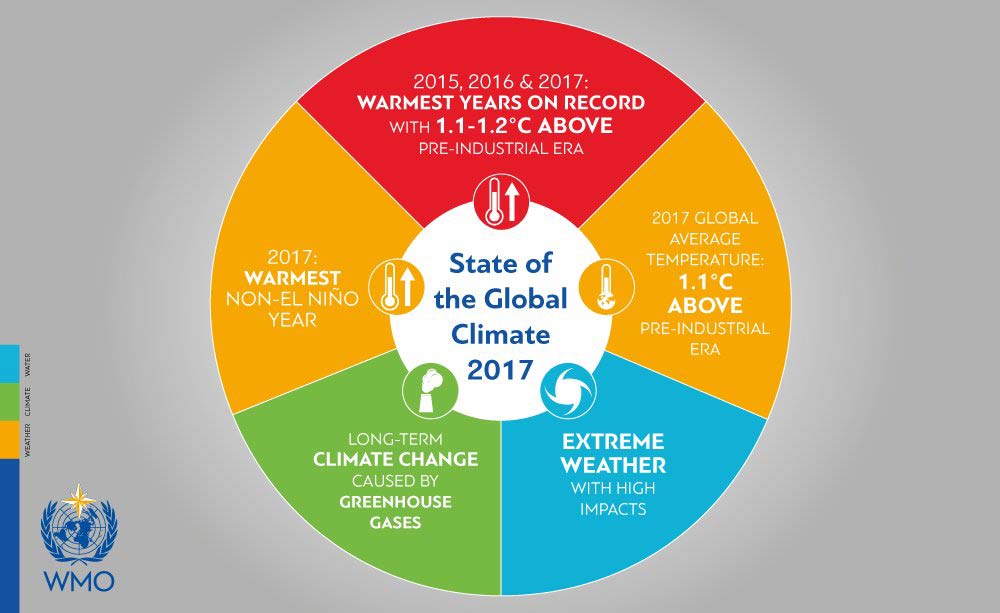
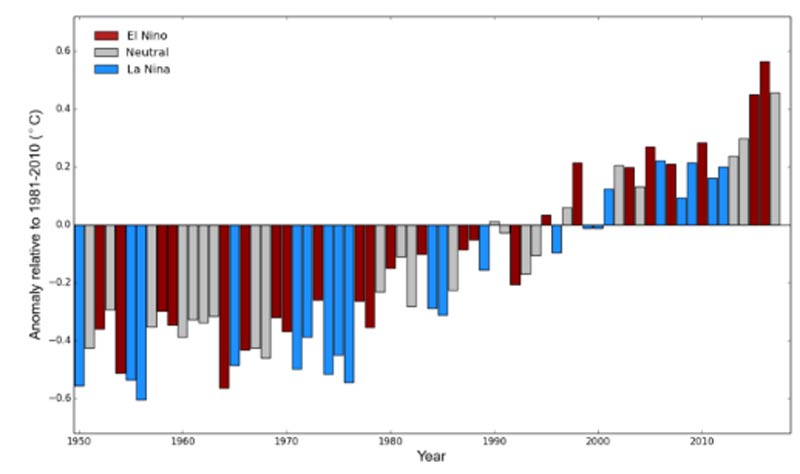





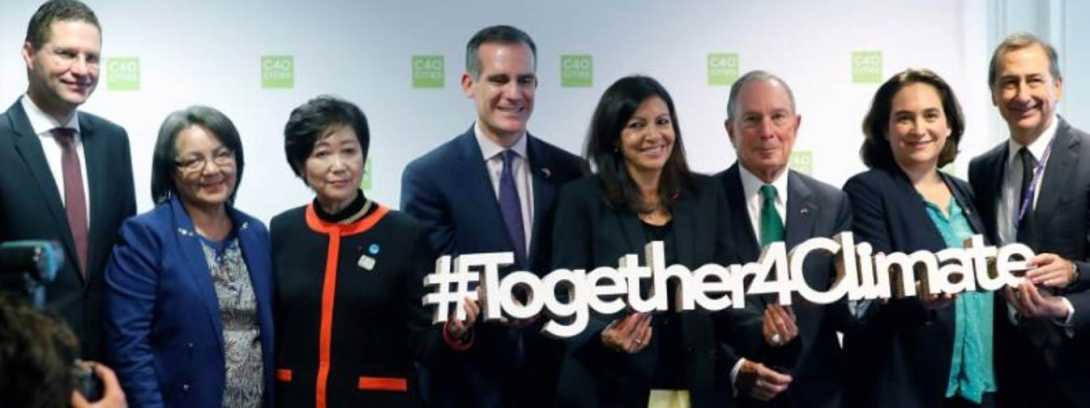
OSLO (Reuters) - Twelve major cities including London, Paris, Los Angeles and Cape Town promised to buy only zero-emissions buses from 2025 and to make major areas free of fossil fuel emissions by 2030 to protect the environment.
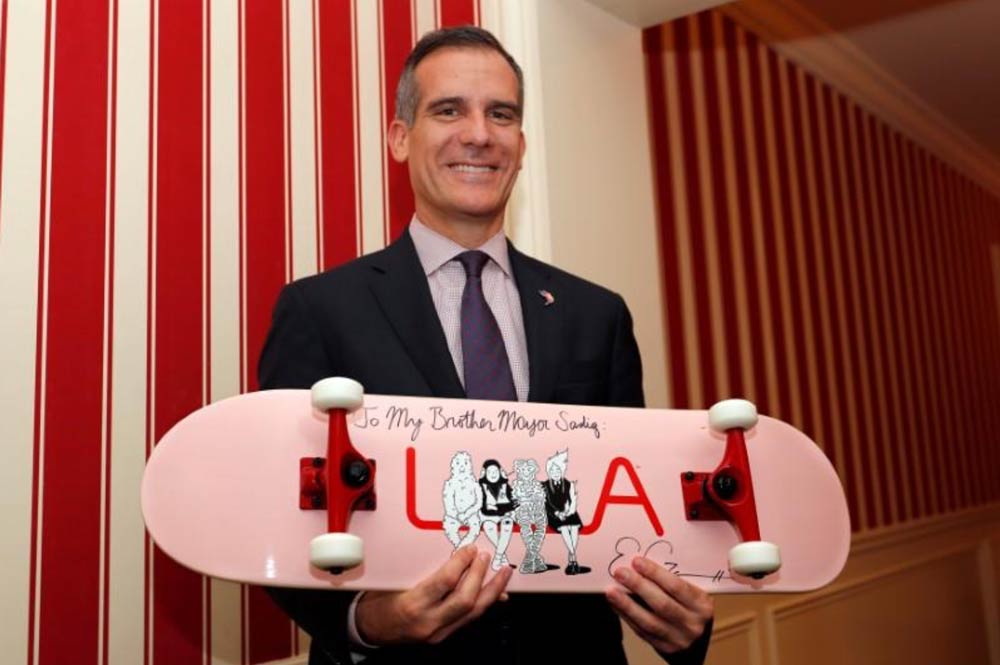
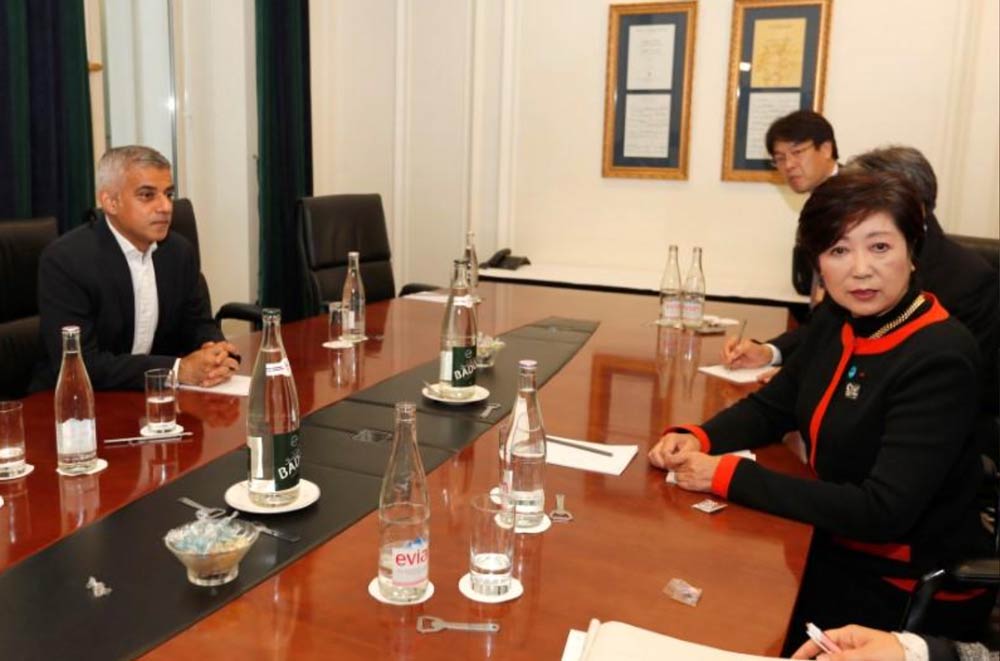
Tokyo Governor Yuriko Koike (R) and London Mayor Sadiq Khan (L) attend a bilateral talk during a two-day summit of the C40 Cities initiative, a network of cities making plansto cut planet-warming greenhouse gas emissions along levels agreed upon in Paris two years ago, in Paris, France, October 23, 2017. Photo credits: Reuters/Charles Platiau
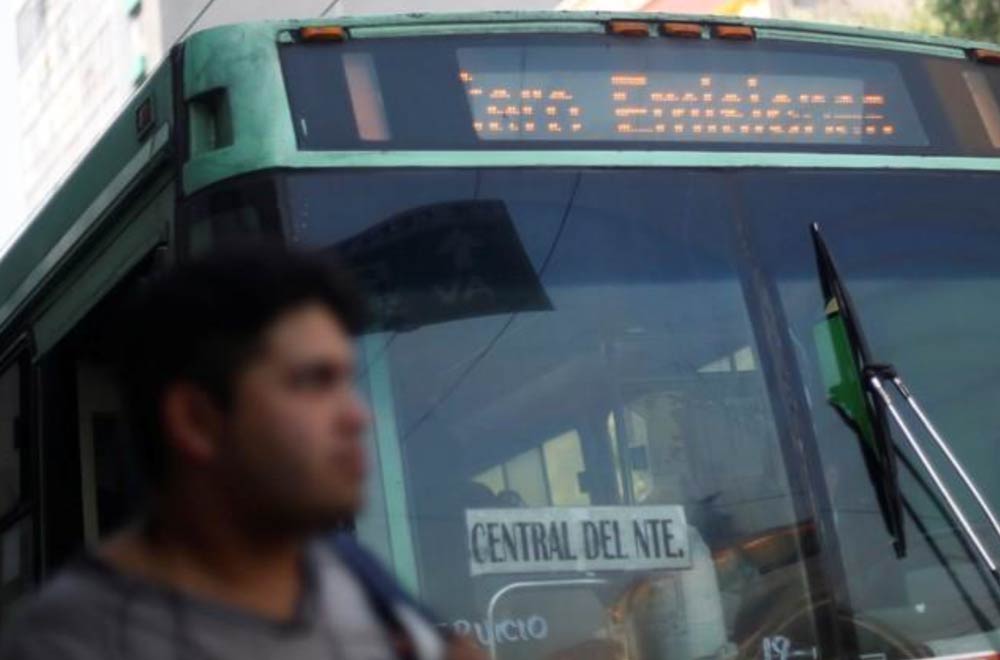
An electric bus that reads 'zero emissions' is seen on a day of traffic restrictions from the Mexico City's government campaign to support anti-pollution measures in Mexico City, Mexico, May 5, 2016. Photo Credits:Reuters/Edgard Garrido

Sustainable Energy for All reveals a new initiative to spur action and political leadership in increasing access to integrated cooling solutions. The announcement follows record-breaking temperatures recorded last month in Iran of 129 degrees.
As global temperatures reach record highs, Connect4Climate's partner Sustainable Energy for All announced a new initiative to identify the challenges and opportunities of providing access to affordable, sustainable cooling solutions for all.
The new Cooling for All initiative will focus on how we embed growing cooling demands that can reach everyone within a clean energy transition, and in turn, support faster progress to achieve the goals of the Montreal Protocol’s Kigali Amendment* agreed last year in Rwanda.
Cooling solutions are an essential need for everyday life – from cold supply chains for fresh produce, safe storage of life saving vaccines and medicines, to safe work and educational environments that increase productivity – cooling needs are not just an air conditioner, but a necessity that puts the focus on super-efficient technologies and innovation to meet our needs.
With populations rising, growing cooling needs risk creating a significant increase in energy demand, that if not managed through super-efficient technologies or clean sources, will cause further climate change impacts and a rise in emissions.
The work of the initiative will therefore create a direct intersect between three internationally agreed goals for the first time: the Paris Climate Agreement; the Sustainable Development Goals; and the Montreal Protocol’s Kigali Amendment* – with one of the key goals of the amendment to limit consumption and production of hydrofluorocarbons (HFCs), a potent greenhouse gas used widely in air conditioners and refrigerators.
An important part of the initiative that will support greater, more informed action, will be the Cooling for All Global Panel. The panel will bring together a group of high-level leaders from government, academia, civil society, business and finance leaders who will together better understand the challenges and opportunities of providing access to cooling solutions for all across the world.
The panel will be co-chaired by two governments who are dealing with issues of cooling access in their own countries. The co-chairs will lead the groups work in developing a comprehensive report that offers the evidence, suggested solutions and understanding of how we accelerate the uptake of cooling solutions to create sustainable cooling access for all, including the poorest countries and their citizens who are often disproportionality affected.
Rachel Kyte, Chief Executive Officer of Sustainable Energy for All and Special Representative of the UN Secretary-General for Sustainable Energy for All (SEforALL), who will act as secretariat for the global panel, said: “As the world grows dangerously warm, access to cooling will become the difference between life and death in some parts of the world that suffer from extreme heat. A clean energy transition is already underway globally that can provide affordable, safe and sustainable energy for all. We must now incorporate cooling for all needs within this transition, while keeping us on track to reach our global climate and energy goals.”
Rachel Kyte, CEO of Sustainable Energy for All in an interview for Connect4Climate. Photo Credits: Max Thabiso Edkins
Investing in more efficient cooling solutions provides a great business opportunity for the private sector, and mobilizing them to meet the goals of the Kigali Amendment and reduction in HFCs is a priority. However, estimated costs show investments in super-efficient technologies would be offset by gains in energy efficiency, and could in the long-term create potential savings across business operations.
The Cooling for All work is being funded by the Kigali Cooling Efficiency Program. Dan Hamza-Goodacre, Executive Director, Kigali Cooling Efficiency Program, commented: “We need cooling to work, rest, play and worship. In short, life depends on cooling, especially in a warming world. Yet not everyone has access to cooling. That has to change. Which is why the new SEforAll initiative on Cooling for All is so important. It's time to reap the benefits of cooling for people across the world, whilst limiting the impact on the climate. We can't keep cooling down by warming the planet up.”
The initiative will convene its first panel meeting this September in New York on the sidelines of the UN General Assembly and Climate Week NYC, where co-chairs and panel members will be announced. The panel’s report will be launched in 2018.
* Background
The Montreal Protocol is a multilateral environmental agreement that is successfully preventing massive damage to human health and the environment from excessive ultraviolet radiation from the sun by phasing out the production and consumption of substances that deplete the ozone layer. On 15 October 2016, in Kigali, the parties to the Montreal Protocol reached agreement at their 28th Meeting to phase down consumption and production of hydrofluorocarbons (HFCs), which are frequently used as substitutes for ozone-depleting substances (ODSs). Although HFCs are not ODSs, they are powerful greenhouse gases that have significant global warming potentials (GWPs). The Kigali Amendment is a binding international agreement, or treaty, which is intended to create rights and obligations in international law.
[video:https://vimeo.com/225451984]
Celebrating Climate Action and Sustainable Development Goals, Connect4Climate linked Ocean Week in New York to #All4TheGreen Week in Bologna.
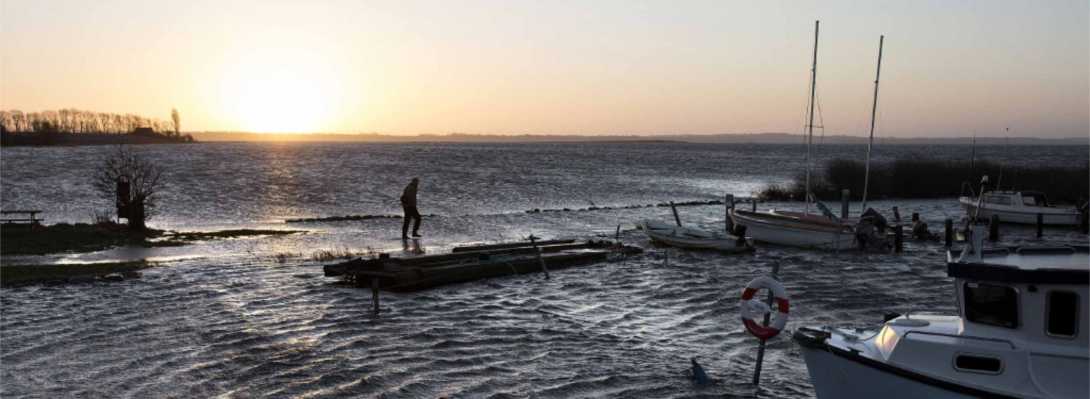
The photo essay on the following pages turns its focus on wind energy and reflects on its enormous power for helping us keep the planet fit and healthy for coming generations.
When the sun set on Friday, January 20, the world had changed. Its most powerful person was now a man who does not believe that climate change is caused by human activity and has publicly stated that global warming is a hoax. Climate researchers and campaigners ended the day in shock and as darkness fell, further development of renewable energy, wind power included, felt nowhere near as secure as it had been.
The photo essay on the following pages turns its focus on wind energy and reflects on its enormous power for helping us keep the planet fit and healthy for coming generations.


Lifted effortlessly into the air, a plastic bag swirls above a basketball court in central Copenhagen. The wind energy keeping it aloft is roughly half to that used by an iPhone on standby.
Our plastic bag has a mass m 0.01kg and has a vertically projected area of
25cm25cm = 1/16m2
The gravitational force the wind must overcome to keep the bag in the air is
F = g*m = 9.82* 0.01 ≈0.1 [N]
We assume the bag is round and its drag coefficient Cd is about 0.5.
Apply the calculation for drag to find the wind speed (in metres per second) in a vertical direction needed to keep the plastic bag in the air
0.1 = ½*1*u^2*0.5*1/16
u = 2.5 m/s
The required updraft in the wind to keep the bag in the air is about 2.5 m/s.
In terms of energy that is equivalent to a power of
F*u = 0.1[N] * 2.5 [m/s] = 0.25 Watt.
An iPhone 6 on stand-by uses about 0.6 Watt

In the lull after Storm Urd, which raged over Denmark on December 26, 2016, twilight descends over a tree blown over by the high winds. Already its branches are becoming partially trapped in the still frozen waters of Utterslev Marsh. The energy in the wind which felled the tree could keep a Tesla S running for 42 hours at 100 kph.
Presuming that the surface area of the tree is similar to that of the rotor swept area A [m2]of a medium scale wind turbine, the tree would absorb energy [Watt] at a rate equal to:
P = Cp* ½ rho*U^3*A
0.5*0.5*1*20^3*20*20
= 1/4*20^5
800 kW
During the storm, the strongest gust was measured at 37.8 m/s (84.5 mph). Had the tree fallen in winds of 21 m/s while standing for one hour, the average energy absorbed would have equalled 1 MWh.
A Tesla S at one tenth of its maximum capacity of 236 kW (1000kW/23.6kW) would keep moving for 42 hours.
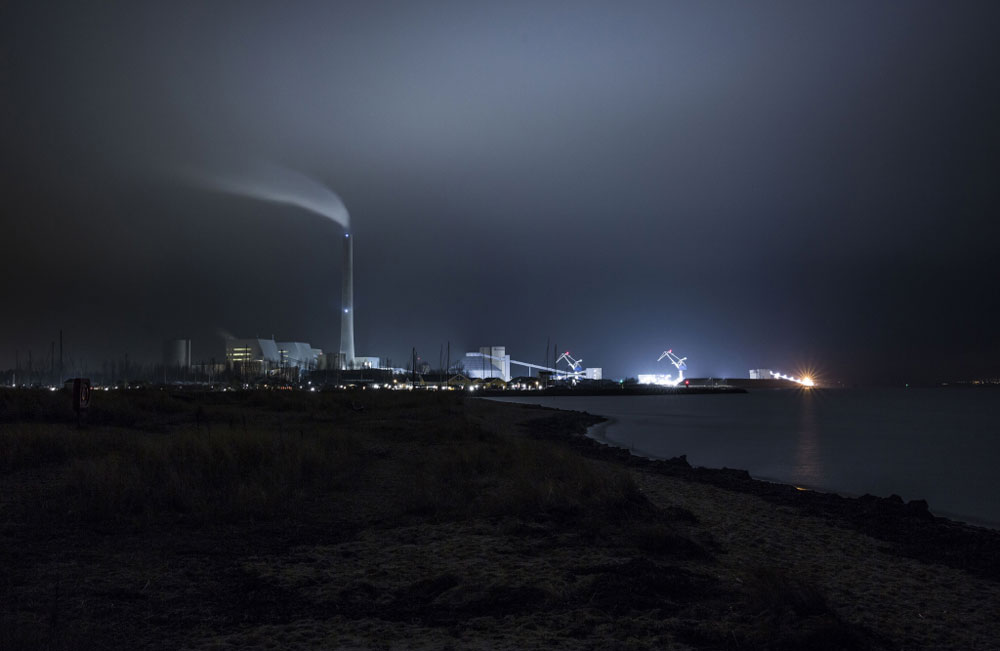
The sun rises over a changed landscape. A tidal surge caused by the previous night’s storm leaves rows of small boats tied to invisible underwater jetties in Ise Fjord. Together with neighbouring Roskilde Fjord it makes up the largest fjord system on Denmark’s main island of Zealand. The force of the storm, equivalent to about fourteen hours energy consumption in the city of Aarhus, raised the fjord’s water level to 1.59 metres above normal.
Ise Fjord is nearly 50 kilometres long and has a total area of about 450 square kilometres.
E= m g H [Joule] Pr m2: 100 dm * 15.9 dm *1*9.82 m/s^2*1.59 m = 24,826 Joule/m2
450 km2 = 450 e6 m2
E pot =11.2 TJ = 11.2 e3 G Joule
A Dane uses just 6,122 kWh a year. With a year made up of 8760 hours, that is just under 1 kW of power per citizen
6122 kWh/8760 hours = 700 Watt
Denmark’s second largest city, Aarhus, with a population of nearly 320,000 therefore uses on average 700 W *319 680 people = 223 MW. One hour’s consumption of electricity in Aarhus corresponds to
223 MW * 3600 [s] = 0.806 TJ
The energy behind the rise of the water level in Ise Fjord could keep Aarhus supplied with energy for
11.2 TJ/0.806 TJ = 14 hours
Calculations by Torben Krogh Mikkelsen

Sundarbans coastal people of Bangladesh are living in the dark. Villages are enveloped in darkness after the sunset. Women use kerosene lamps or have to cook food on daylight only. Students have to skip their study hours at night. Why? Most of the people in this area live below the poverty line. Their life and livelihood fully depend on the Sundarbans resources. They collect fishes, crabs, shrimp fry, honey, golpata (nypa frutican), and others, from the Sundarbans mangrove forest.
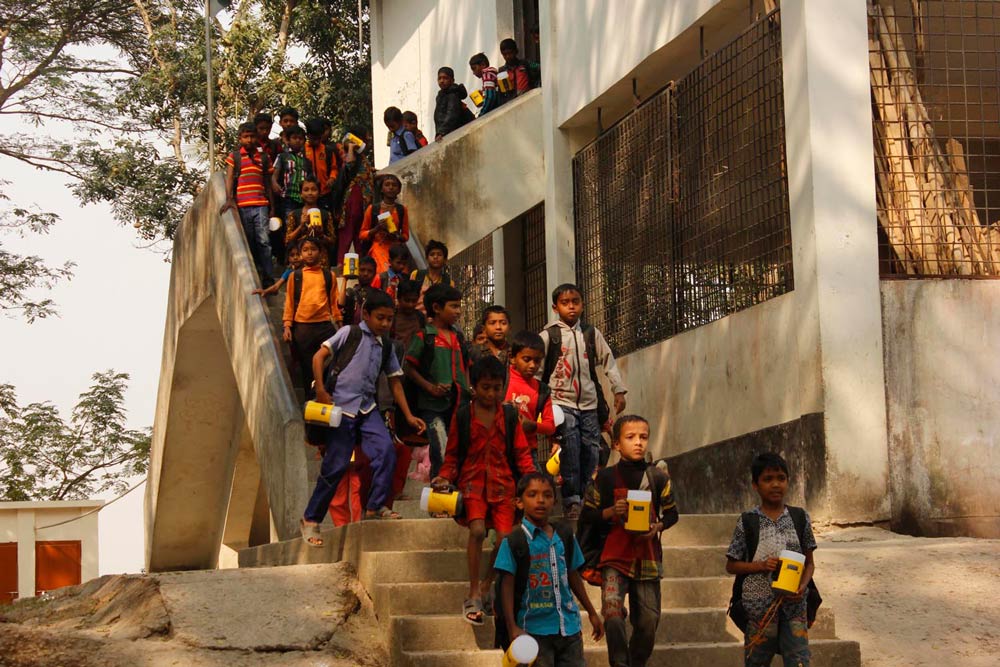
For solving these problems and in a step forward to help the community, Bangladesh Environment and Development Society (BEDS) has been working to promote clean energy at the non-electrified Sundarbans coastal area in Bangladesh with the help of Korea Green Foundation (KGF). To light up villages at night, an initiative is underway to distribute different types of 2800 Solar Lamps and 504 solar home systems among Sundarbans coastal area families and install three solar stations. These solar lights will decrease the need to purchase kerosene, which is associated with respiratory diseases and global warning.
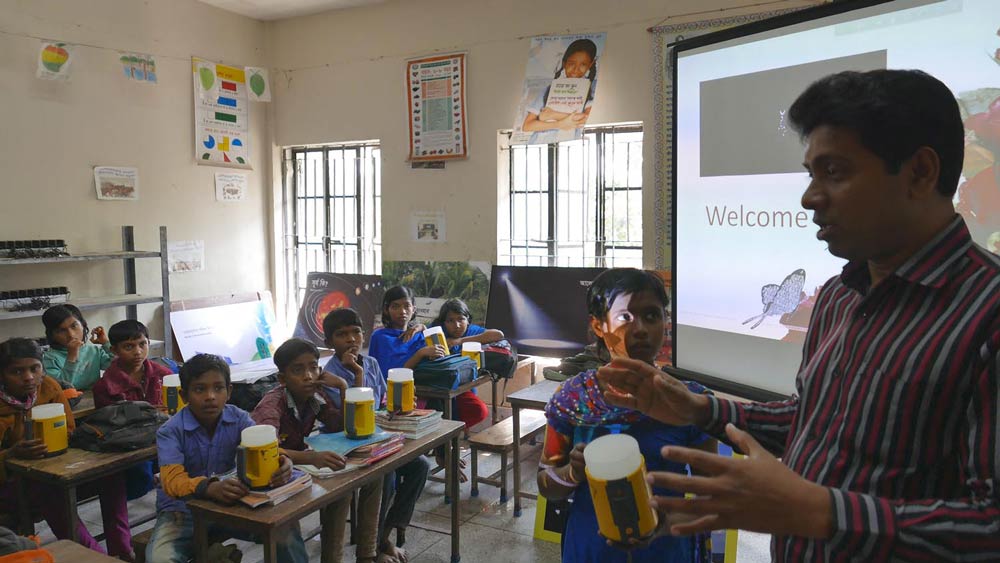
At a glance of our initiatives and results:
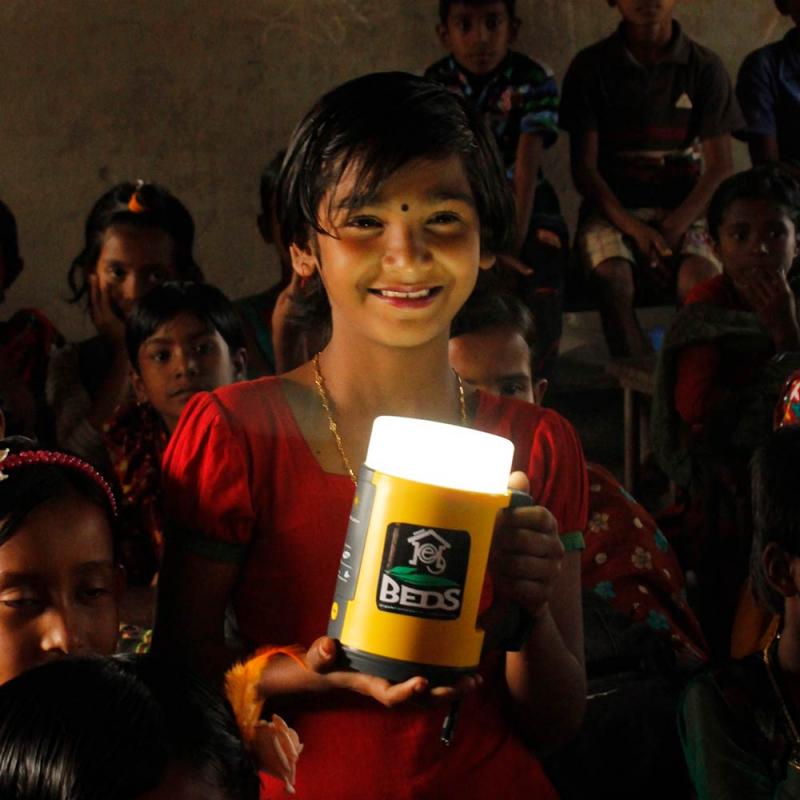
Key outcomes:
Young Award Short Film Winner of the Film4Climate Global Video Competition 2016 presented by Connect4Climate and partners
Resources
 https://www.youtube.com/watch?v=LK33lqx-Tog&index=2&list=PLXpB73IOgf7QCGBxfc_E4grs3xmkt8lpX
https://www.youtube.com/watch?v=LK33lqx-Tog&index=2&list=PLXpB73IOgf7QCGBxfc_E4grs3xmkt8lpX
 https://www.youtube.com/watch?v=L1Xh3sFGlvg&index=3&list=PLXpB73IOgf7QCGBxfc_E4grs3xmkt8lpX
https://www.youtube.com/watch?v=L1Xh3sFGlvg&index=3&list=PLXpB73IOgf7QCGBxfc_E4grs3xmkt8lpX
 http://www.thedailystar.net/backpage/solar-lamps-brightened-their-lives-1340548
http://www.thedailystar.net/backpage/solar-lamps-brightened-their-lives-1340548
Hosted by the World Bank Group and supported by Italy’s Ministry of the Environment and Energy Security and Germany’s Federal Ministry for Economic Cooperation and Development, Connect4Climate (C4C) is a global partnership for a livable planet that connects, creates, and communicates to build long-lasting change for future generations.